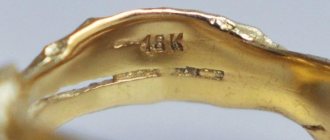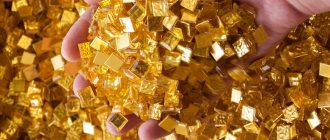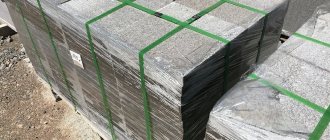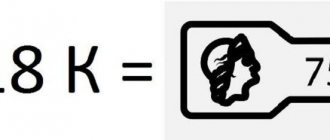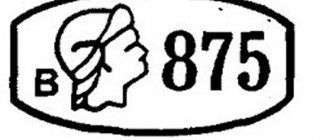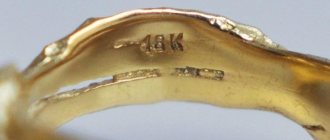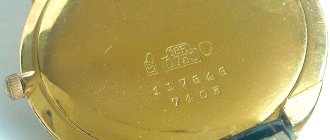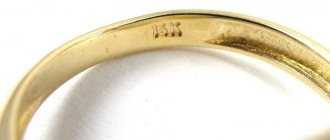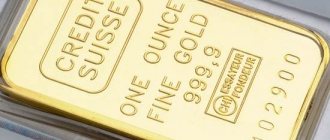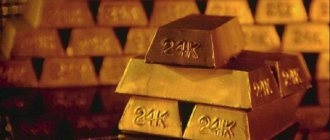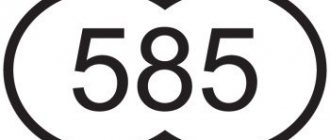In ancient times, grains of various plants were mainly used as units of mass for jewelry. Today we use more convenient designations, but even the word “carat” comes from the name of the carob tree, the seeds of which also served to determine the value of a stone or pearl.
♥ ON THE TOPIC: BelAZ-75710: 1,300 liters of fuel per 100 km and other 7 facts about the best dump truck in the world from Belarus.
What is a carat?
So, there is an international treaty called the Meter Convention, which has now been signed by 55 industrialized and trading nations. This agreement ensures the constancy and unity of measurement standards, including the carat, as a unit of measurement for the mass of a precious stone or pearl.
♥ ON THE TOPIC: BelAZ-75710: 1,300 liters of fuel per 100 km and other 7 facts about the best dump truck in the world from Belarus.
How to determine the carat value of a diamond?
There are several ways to determine the carat value of a diamond:
- weighing;
- according to the formula;
- using special tables.
Each method determines carat content with some degree of accuracy.
The weight of small pebbles is estimated by weighing. For this purpose, special scales are used - microscales. The precision of diamond weighing is determined to thousandths. In the same way, you can determine a diamond of 3 carats, 1 carat, or the weight of medium stones.
Today on the market the cost of a 1-carat diamond of the highest quality reaches 20 thousand dollars.
To determine the price of a gemstone, the cost per unit of measure should be multiplied by its weight.
How much does 1 carat weigh when measuring the weight of gemstones?
According to the certificate, the carat weight is equivalent to 200 mg (0.2 grams). Moreover, in most countries (including Russia), the carat cannot have a fractional part, and the weight of the raw material or product is indicated by an integer.
♥ ON THE TOPIC: How brand names appeared: Ikea, Lego, Pepsi, Reebok, Skype, Sony, Canon, Google - 16 stories about the origin of the names of famous companies.
Origin of the weight measure
The name came about through the successive transformation of the Arabic word "qirat" into the ancient Greek ceration, and then into the Italian carato. All these names mean the same thing - pod ceratonia, the brown seeds of which at the dawn of our era were used as a measure of mass, approximately equal to 189 mg. The flat seeds of the tree contain a complex polysaccharide, which determines their hardness, as well as the constancy of mass and size. In Ancient Rome, this measure of weight was called siliqua.
Despite the fact that this unit of mass has been known for so long, it was officially adopted only in 1907 at the Paris Conference, where an international treaty was signed, which was the key to the unity of metrological standards in 17 countries. Representatives of Russia were present at the conference, but in the USSR the carat was introduced only in 1922 for use in a narrow jewelry field. Currently, the organization that regulates the rules of metrology classifies this measure of mass as a unit that should be introduced on a limited basis. Another feature of the carat is that decimal prefixes are not applicable to it (for example, you cannot say kilocarat).
Obsolete carat
In the literature and scientific works of the past, you can also find the designations “English carat” and “Arabic carat” (also known as “Kirat”).
The English carat (about 205.4 grams) was used in Britain and its colonies until 1888 and was equal to approximately 3,170 troy grains, which in turn was equivalent to the weight of an average grain of barley.
The Arabic carat was defined differently in different countries of the Middle East and Asia. For example, in Egypt and Syria it was about 195 mg, and in Asia Minor - 204 mg.
♥ ON THE TOPIC: 70 interesting facts about IT technologies that you might not know.
How do the mass and diameter of precious gems relate?
The number of carats is also calculated by the size of the crystals in mm. The correctness of the calculation depends on the type of cut and compliance with the technology for its implementation. The mineral is removed from the frame and measured with an electronic caliper or other instrument.
You can determine the carat of a stone using the formulas (size in mm):
- for princess cut - width × length × height × 0.0083;
- round - height × diameter2 × coefficient 0.0061;
- triangle - width × length × height × 0.0057;
- oval - height × diameter2 × 0.0062;
- awning - width × length × height × coefficient (0.00595, 0.00585, 0.00565 or 0.00580);
- heart - width × length × height × 0.0059;
- emerald - width × length × height × coefficient (0.0080, 0.0092, 0.01 or 0.0106);
- drop - width × length × height × coefficient (0.00575, 0.00600, 0.00615).
When calculating the mass of large gems, the formula takes into account not mm, but centimeters. In fact, a 1-carat round diamond is equal to 6.4 mm. In an oval crystal, 1 ct would be 7.5 mm × 5.5 mm. When cutting marquise, one ct corresponds to 10 mm × 5 mm.
Carat in gold
Our compatriots are often confused by the fact that in many Western countries the fineness of gold is measured in carats. Indeed, how can you determine the ratio of metals in a product using a unit of weight?
In fact, it's simple. Just like the usual standard, carat determines the proportion of pure gold in the alloy, or rather, in its 24 weight parts. Converting a sample into carats is quite simple; you just need to multiply the existing value by 24 and then divide by 1000. For example, to convert the 585th sample into carats, we use a simple equation:
X = 24 × 585: 1000 = 14 carats (the 585th hallmark corresponds to 14 carats)
In a similar way, you can convert carats to fineness:
X = 1000 × 18: 24 = 750 hallmark (18 carats corresponds to 750 hallmark).
The largest diamonds in history
The size of a stone is valued as highly as its weight. We present to you, our readers, a list of the largest stones, which amaze not only with their magnificence, but also with their impressive size:
- Cullinan I was one of those jewels that came into existence through the cutting of a piece of the same name. Each part received a number marking. The weight of the first Cullinan was 3.1 thousand carats. Its peculiarity was the absence of bubbles and cracks. After the Asskor brothers crushed the diamond into pieces, 105 stones of different sizes were obtained, the largest weighing 530.2 carats. He became known as the "Star of Africa".
- The 110.3-carat yellow pear-shaped Sun Drop was formed about 3 billion years ago but was discovered in South Africa in 2010. The amazing color is due to nitrogen atoms, which are part of the product's mesh.
- What makes Card Noir unique is not only that it is 88 carats, but also its black color. The insurance price of the stone is $37 million.
We are sure that you found this article very interesting and that you were able to deepen your knowledge of gemstone weights. Now you can independently calculate the weight of a gemstone, taking into account its size and cut shape. Do you think this information will be useful for your friends? Then share this article on social networks and let your friends also know the answers to these questions.
Team LyubiKamni
Other stones
The weight of diamond imitation stones in jewelry can also be measured in carats. They use natural white minerals, for example, sapphire, topaz, beryl, zircon and rock crystal, as well as artificial ones - cubic zirconia, moissanite, spinel, strontium titanate and others.
It is very difficult even for professionals to identify a talented imitation by eye. But there are a number of ways you can make sure a diamond is real. Among them:
- Assessment of light refraction. The flow should be mirrored by the crystal faces in such a way that when the crown of the stone is brought to the light source, one sparkling point is visible.
- Interaction with hydrochloric acid. The diamond is resistant to hydrogen chloride, whereas fake stones remain stained.
- Scratch resistance. A diamond leaves scratches when it comes into contact with other stones, but at the same time retains its integrity.
- Immersion in water or glycerin. A real stone sparkles and therefore stands out well in the thickness of the liquid, while a fake becomes almost invisible.
- Use of special ultraviolet and electrical conductivity testers. The test is based on brilliance measurements and produces fairly accurate results, but may be misleading when using moissanite instead of diamond.
But some stones have their own jewelry value and have precious status. Their properties (in particular, carat weight) determine the value.
Blue sapphire
Aluminum oxide with impurities of titanium and iron in the matrix forms the blue sapphire gemstone. Cornflower blue is considered the classic color; darker shades are valued less. In addition, due to the admixture of chromium, stones are pink, due to vanadium - purple, and in the absence of titanium - yellow or green.
The largest natural sapphire was a crystal weighing 3.5 thousand carats. At first it was mistaken for a piece of rock crystal, but research showed its jewelry value. Subsequently, other large representatives were found, for example, the “Black Star of Queensland” weighing 733 carats, found by a twelve-year-old boy in Australia, or the “Logan” weighing almost 423 carats from Sri Lanka.
Estimating the number of carats in a sapphire by appearance is not difficult. There are special jewelry tables for this. The dependence is primarily determined by the shape of the stone. For example, a 1 carat sapphire has the following dimensions:
- for round - 6 mm;
- for oval, pear-shaped - 7 x 5 mm (for baguette and octagon shapes, these dimensions will correspond to 1.15 ct).
The price per carat will depend on the quality of the stone. The best minerals of pure cornflower blue color processed without thermal heating cost more than 60 thousand rubles. If the color is orange, purple or pink, then the price drops to 7.5 thousand, but when the total weight exceeds 5 carats, the specimen is considered rare and collectible, its value in some cases can reach one and a half million. The yellow sapphire is valued at 6 thousand, and the green sapphire at approximately 4 thousand.
Nowadays stones are not only mined from deposits, but also synthesized artificially. Their use is not limited to jewelry; they have also found application in optics, microcircuits, and lasers.
Colorless topaz
Topaz is a semi-precious stone. Like diamond, it is very hard, most often colorless, but sometimes due to structural defects there are stones of brown, blue, pink or golden shades, which can fade from bright light and heat and intensify the color when exposed to radiation. Mineral deposits are located in Russia, Ukraine, and Brazil. Sometimes specimens weighing several tons are mined.
Topaz imitates diamond so well that the 1,640-carat semi-precious stone was once mistaken for a diamond and presented to the King of Portugal. It was then incorrectly valued at £57 million. Now topaz is practically not in demand, since it differs too little from quartz. Estimated at approximately 1 thousand rubles per carat.
Green beryl
Ordinary opaque beryl stones are just an ore mineral, but if they contain vanadium or chromium oxide, which gives a rich and bright green color, then they are called emeralds and are considered precious. Moreover, a transparent stone of a deep green color without flaws weighing more than 5 carats will cost more than a diamond.
Emeralds of excellent quality and large mass have not been encountered very often throughout history. One of the famous specimens was a stone called "Queen Isabella". It weighed 964 carats and was the size of an ostrich egg.
Natural emerald almost always has cracks and chips, so a stone on which defects are not visible to the naked eye is considered flawless. Its cost per carat will vary from 250 to 400 thousand rubles. An emerald of good, but not impeccable quality will be valued from 30 to 300 thousand, depending on the defects identified, and commercial stones cost 18-19 thousand.
So, if it is now clear how much a gram is one carat, then its price for stones of different quality can vary widely. Therefore, a unit expresses only the weight of an object or the purity of gold, but by itself cannot fully characterize its value.
